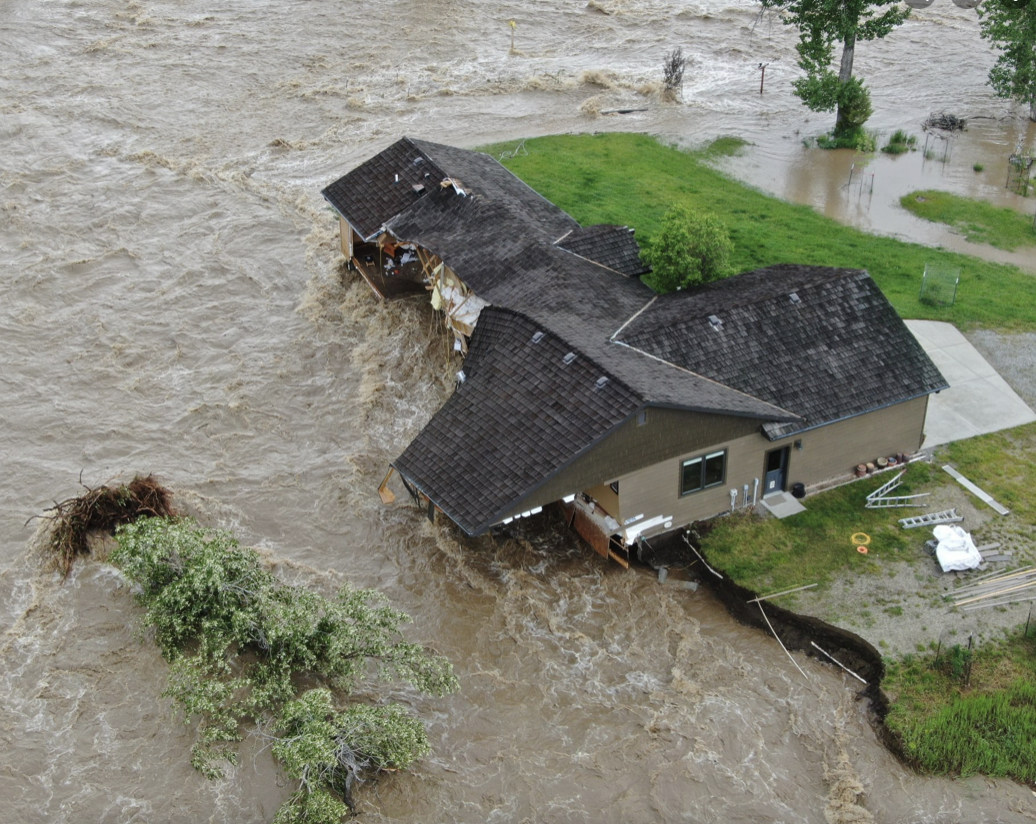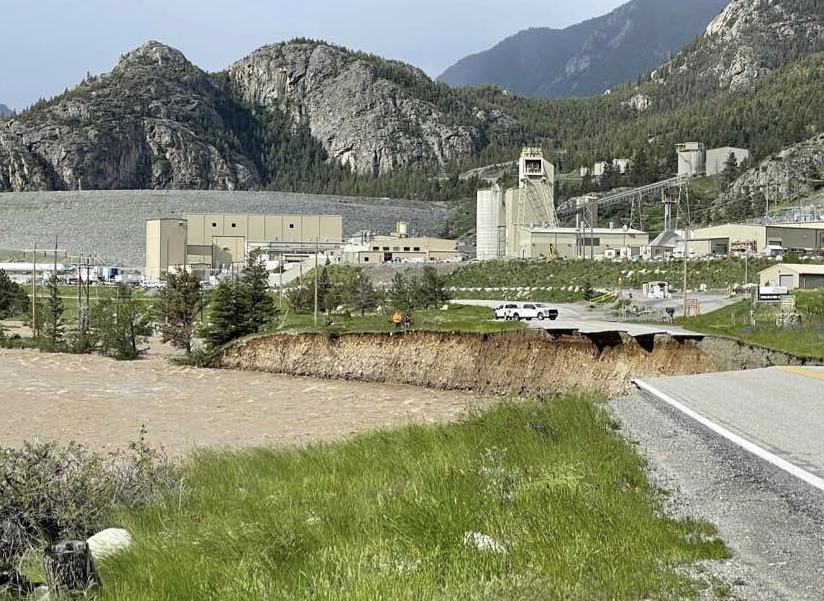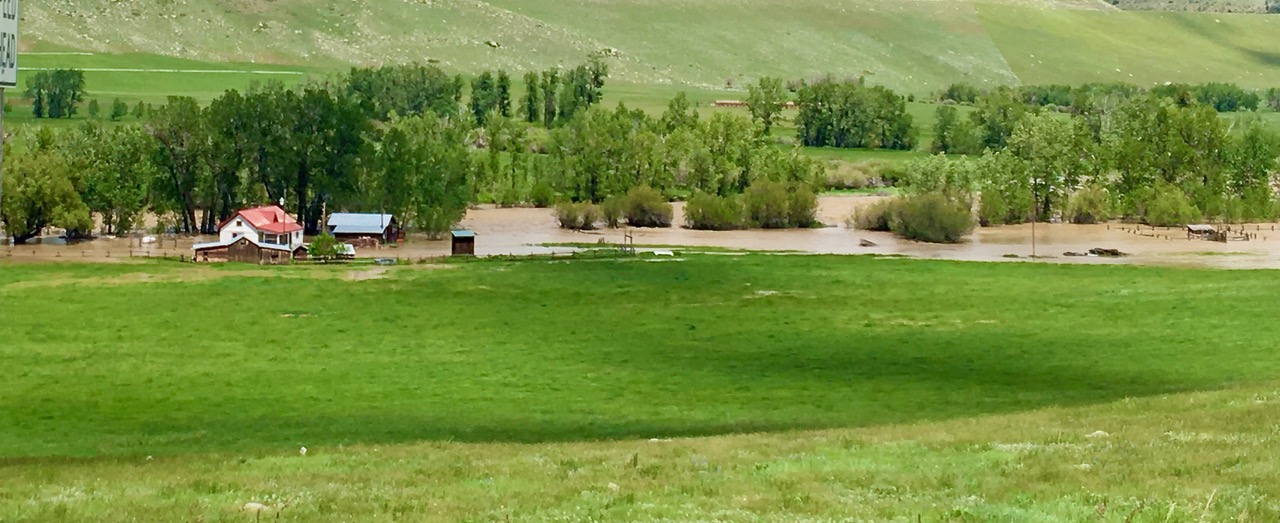“The river is its own beast,” Clark said. “But now it’s changed. We need to be patient, and we need to do things right. There will be sections where the channels may be realigned and there are places where it will just stay as it is now.”
The Stillwater Valley Watershed Council (SVWC) was formed in 2010 to fight invasive noxious weeds in the area. Now, 22 years later, they are working on a remediation plan to deal with the effects of a 500-year flood.
Lindsey Clark is the Coordinator for the SVWC and she has a big job.
“We’re a non-profit centered on the natural resources of Stillwater Valley. Forest health, soil health, water quality, and noxious weed control can be an undertaking,” she said. “It’s all about natural resource management and education. Whether it’s improving irrigation efficiency, decreasing the spread of noxious weeds or more recently, remediation after the flood, it’s about managing our natural resources the right way.”
Knapweed
“An invasive weed is how the SVWC got started,” Clark said. “Spotted knapweed is not native to the Stillwater Valley and it was becoming a problem.”
In 2006, a local group of landowners came together to work on a solution to the knapweed issue and have since been successful in their efforts. Although they exhausted their funding at that time, they knew the work was important and wanted to continue. The group formed a board, and now the SVWC is a 501(c)(3) non-profit focused on protecting and enhancing the valley’s natural resources.
Clark is the SVWC coordinator, and there is a Board of Directors made up of 12 local landowners and community members.
The SVWC still monitors and controls spotted knapweed and several other prevalent noxious weeds. Over time, their mission has grown beyond weeds. Then, in the summer of 2022, the Stillwater Valley, along with many valleys across south central Montana, experienced a 500-year flood.
The 500-Year Flood
A flood is referred to as a 500-year event when it exceeds a certain historic level of intensity causing immense devastation in its wake. This was certainly the case along the Stillwater Mine.
In April of 2022, it snowed in Stillwater Valley and the surrounding mountains Beartooth and Absaroka Mountains, up around the headwaters of the Stillwater River.
“It was a decent spring snow,” Clark said, “but it didn’t stay cold enough this year. The snow didn’t get a chance to really freeze solid in the mountains, and then in May we had the rain.”
The warm-up in June in addition to more spring rain created a perfect storm scenario for the April mountain snowpack.
In June all the snow melt came rushing into the valley below.
The sudden melt and the enormous amount of water had an immediately devastating impact on residents and land along the banks of the river and beyond.
“Numerous homes were lost and bridges went down,” Clark said. “Agricultural land took a lot of damage, and Sibanye Stillwater Mine was shut down for two weeks. The main route to and from the mine, the largest employer in Montana, was among the washed-out bridges.”
The Stillwater River is fed by a number of local tributaries. All of this water in turn feeds into the Yellowstone River. During the historic flooding, all of these rivers were hard hit, recalled Clark.
“As that water came barreling out of the mountains it had a lot of force, and slammed into the river’s banks,” she said. “As it bounces off and crashes into the opposite bank, it is depositing debris along the banks that it washed away upstream. Waste from septic systems, homes that were ruined, bridges, rock bars built up…so much was washed downriver by the flood.”
River Assessment Triage Team and the Recovery
No one around had really experienced a disaster of this caliber. Due to the severity of the flood, Clark said they just had to wait for various local, state, and federal governmental organizations, such as FEMA, the local Conservation District, and county entities, to evaluate the situation and provide assistance as they were able. Still, there were many unanswered questions, and impacted landowners were left in need of solutions.
“We’ve formed a River Assessment Triage Team (RATT),” Clark said. “The team consists of experts and locals, including a hydrologist, geomorphologist, fisheries biologist, the local Conservation District, and representatives from the SVWC.”
The SVWC was inspired to form this team based on similar actions their neighbors at the Musselshell Watershed Coalition took over a decade ago after they experienced historic flooding in 2011.
Specifically, the RATT team has been tasked with various objectives. They evaluate the impacts of the June 2022 flooding on the Stillwater, Rosebud, West Rosebud, and East Rosebud rivers to document the character of the event and its ramifications. The team also documents impacts, described in terms of primary geomorphic processes at work, and conceptual alternatives providing flooding mitigation strategies that are cost-effective and support the long-term health of the river systems and landowners involved.
RATT also presents permitting requirements with a summary of potential funding opportunities necessary for future grant procurement and eases the financial burden of landowners, providing technical guidance on site summary reports as well as best practice recommendations for river cleanup and stream bank restoration efforts.
“We need to prioritize the largest issues first,” she said, “whether it’s stabilizing the river channels, removing material, or other treatments, there is a lot of work ahead and it will take time, patience, perseverance, and unfortunately, a lot of money.”
Clark said that the main goal of the RATT is to get a better picture of what needs to be done along the river and that the SVWC is committed to assisting landowners to apply for grants for their future remediation efforts.
The Effect of Community
In the face of such a historic challenge, Clark said the community came together in a big way.
“We really have a community that looks out for each other,” she said. “So far we have received the following contributions from local organizations to help get the RATT team going: Absarokee Civic Club, Columbus Community Foundation, Nye Community Foundation, Stillwater Protective Association, Stillwater Conservation District, as well as the Absarokee Community Foundation (from a grant through Montana Community Foundation’s Montana Disaster Recovery Fund).”
Clark added, “Additionally, SVWC will be providing the seed money to get the RATT team off the ground and into the water. Matching funds for future grant applications will be used to finance the team, coordination of the team, and future match funds for landowner remediation projects. With the community support we have received so far, we are off to a fantastic start. It has been great. We are so thankful to each organization for its willingness to contribute. The entire community really came together.”
The Future
Without a doubt, this level of flooding changes the shape of any river. Clark said the rivers have gotten shallower due to material deposits, and there will be winter issues such as potential ice jams and blockages. There is no telling what spring runoff will look like.
“The river is its own beast,” Clark said, “but now it’s changed. We need to be patient, and we need to do things right. There will be sections where the channels may be realigned and there are places where it will just stay as it is now.”
Clark said the SWVC Board of Directors has been more than supportive of these efforts and will be hiring a liaison between the team and the landowners in the area to take on whatever comes up in the near future for the RATT.
“This isn’t a short-term project,” she said. “We’re going to be at this for years. Really, the work doesn’t stop. We’re dealing with current issues, but we’re also trying to improve, preserve and protect the amazing natural resources we have for the generations to come.”




